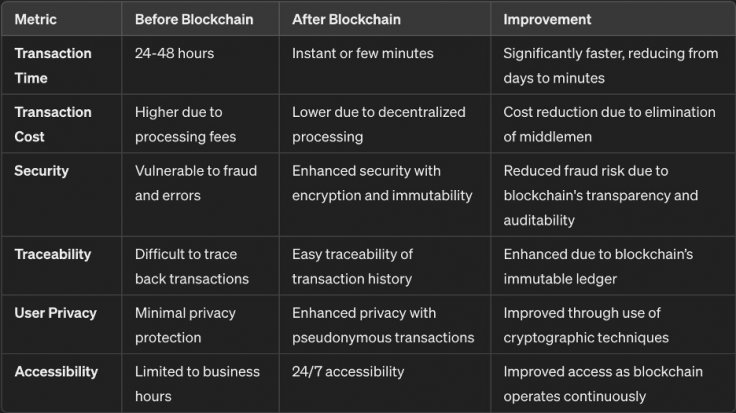Introduction
The evolution of digital banking is accelerating, fueled by innovations that enhance both the security and the user experience. Among these, biometric technologies are proving crucial, offering secure and user-friendly methods to protect sensitive financial information. Such advancements are integral in today's digital banking landscape, emphasizing the necessity of robust security protocols to maintain trust and integrity within the financial system. Ensuring that digital banking is not only convenient but also secure for all users is paramount for the industry's future.
1. Biometric Security Enhancements
Biometric technologies, such as facial recognition, fingerprint sensors, and voice recognition, are increasingly vital in securing digital banking platforms. These technologies provide a secure and convenient method for authenticating identities, significantly reducing the risk of unauthorized access. Many banks globally have successfully integrated these systems, enhancing customer interactions by making them more secure without sacrificing convenience.
Case Studies of Successful Implementations
Examples include major banks that have implemented facial recognition for secure logins and transactions, and others using fingerprint sensors to enhance the security of mobile banking apps. These measures have proven effective in reducing fraud and improving user trust.
2. Artificial Intelligence and Machine Learning in Fraud Detection
Artificial intelligence (AI) and machine learning (ML) are transforming fraud detection in digital banking by analyzing vast amounts of data to identify unusual patterns indicative of fraud. These technologies assess factors like transaction patterns, location data, and timing, identifying inconsistencies that signal potential fraud. As these systems learn from historical data, their ability to detect subtle signs of fraudulent activity continues to improve.
Real-Time Transaction Monitoring
AI greatly enhances real-time transaction monitoring by providing immediate alerts on suspicious transactions. This rapid detection capability enables banks to act swiftly, minimizing the risk of significant financial loss.
PRO TIP: Leveraging AI-driven apps for monitoring account activities on-the-go can provide an essential security layer, allowing users and financial institutions to stay ahead of fraudsters.
3. Blockchain for Secure Transactions
Blockchain technology is crucial for enhancing transaction security and transparency in digital banking. By creating a decentralized and immutable ledger, blockchain ensures that each transaction is recorded securely and transparently, reducing the likelihood of fraud and errors.
Smart Contracts
Smart contracts automate banking processes, such as loan approvals and claims settlements, by encoding the terms directly on the blockchain. This automation reduces the need for manual processing, decreases the potential for errors, and speeds up transactions.
Securespend and Blockchain Integration
Incorporating securespend strategies within blockchain transactions enhances security further. By using stringent verification processes and encrypted data exchanges, banks can ensure that transactions are not only secure but also efficiently track expenditures and prevent fraud.

4. Personalized Banking Experiences Through Data Analytics
Data analytics enable banks to deliver personalized banking experiences. By analyzing customer data, banks can offer tailored financial advice and product recommendations. This not only improves service delivery but also enhances customer retention by providing solutions that meet individual financial needs.
Enhancing Customer Retention
Using predictive analytics to identify potential customer churn allows banks to proactively offer personalized products and services, significantly improving engagement and loyalty.
PRO TIP: Personalized alerts about financial opportunities and risks act as proactive engagement tools, enhancing customer satisfaction and retention.
5. Integration of IoT in Banking
The Internet of Things (IoT) is reshaping banking, with devices such as smart ATMs and enhanced security systems at bank branches improving operational efficiency and customer service. IoT enables real-time data collection, which can be analyzed to enhance decision-making and service delivery.
Security Implications of IoT in Banking
To manage the risks associated with connected devices, banks implement advanced encryption and continuous monitoring to protect against potential vulnerabilities.
6. Voice-Activated Made Banking
Voice technology enhances banking accessibility and efficiency, enabling customers to conduct transactions via simple voice commands. This technology supports users with visual impairments or physical disabilities, making digital banking more accessible.
Voice Technology for Accessibility
Voice-activated systems help to break down barriers for those with disabilities by providing a more inclusive banking experience.
Security Concerns with Voice-Activated Systems
Despite the benefits, voice-activated systems face unique security challenges, such as the risk of voice impersonation. Advances in voice recognition technology are crucial for mitigating these risks.
Conclusion
The digital banking landscape of 2024 is set to be transformed by innovations such as biometric security, AI, blockchain, IoT, and voice-activated technology. These advancements enhance security, efficiency, and accessibility, making banking more integrated and intuitive. The adoption of these technologies is crucial for banks to meet the evolving needs of consumers and enhance security measures, ensuring a future where digital banking is both secure and user-friendly.









